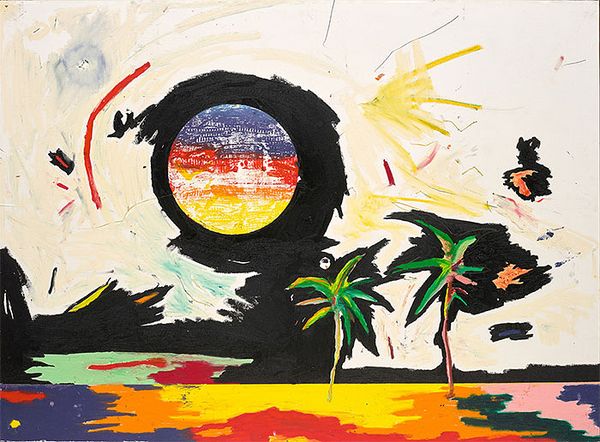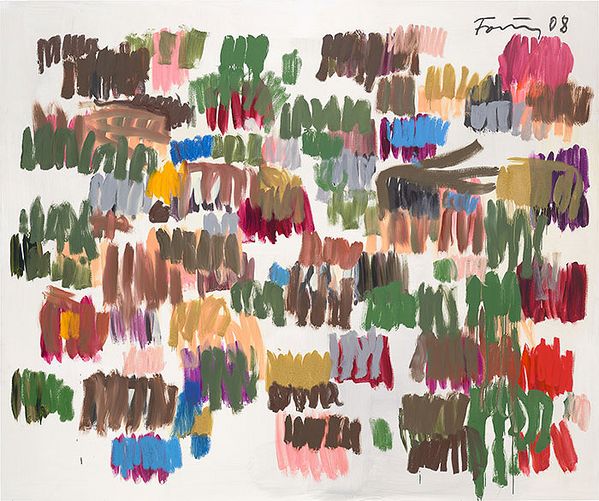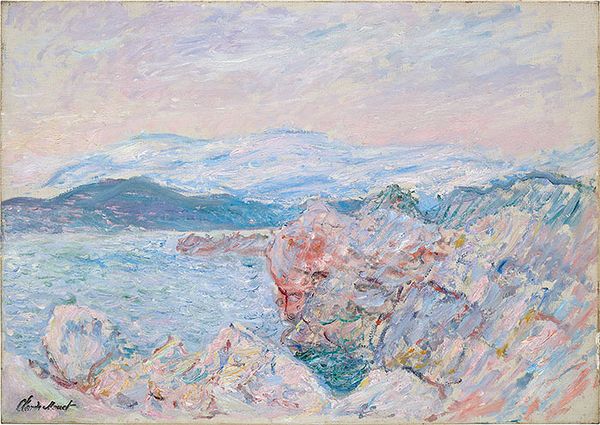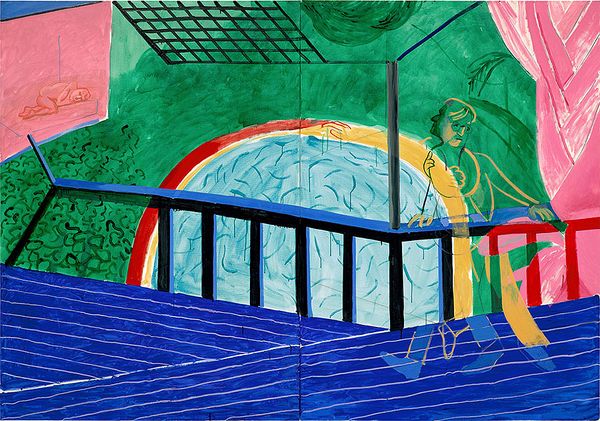David Hockney, Self-Portrait on the Terrace, 1984. 20th Century & Contemporary Art London.
With Phillips’ 3 March 20th Century & Contemporary Art Sale in London just around the corner, we’ve selected works that embody the colors and emotional landscapes of each season and paired them with a playlist of songs to evoke the moods associated with them.
Spring: David Hockney
Basking in an inimitable California sunshine and executed in vibrant passages of bold color, Self-Portrait on the Terrace is a vibrant example of David Hockney’s California landscapes, highly unusual in its incorporation of a delicately rendered self-portrait. Painting the areas in and around his Hollywood Hills home after having relocated to this spot on the West Coast in 1978, Hockney took great inspiration from the dramatic, expansive landscapes he discovered on drives through the hills above the city. Among the many, fantastic paintings of the wide-open vistas and ribbons of road carved into the hillsides around Los Angeles that Hockney captured in these years, undoubtedly it was the house itself that quickly emerged as a favorite subject, reproduced across a selection of paintings, drawings, and prints from the period. In the gossamer impression of Hockney’s figure, we see a Janus-like face peering in opposite directions, as if trying to follow a concerto of birdsong around the yard on an early spring morning.
Spring Tunes
Joathan Harvey - Bird Concerto with Pianosong
Wild Nothing - Chinatown
Clams Casino - Treetop
Stelvio Cipriani - Papaya
Blue Hawaii - In Two

Harold Ancart, Untitled, 2015. 20th Century & Contemporary Art London.
Summer: Harold Ancart
Teeming with Harold Ancart’s signature motifs and vibrant color in an otherworldly landscape, Untitled from 2015 beautifully embodies the artist’s painterly style for which he has become so highly regarded. Strongly identifying with an individualized notion of the flâneur as “one who walks around and tries to isolate poetic moments out of the everyday urban landscape,” Ancart’s visual lexicon is at once familiar and jarringly surreal. Slightly distorted shapes, manipulated horizon lines, and inverted color schemes challenge viewers to examine the world in new and unusual ways, as if through a pair of dazzlingly psychedelic lenses on a particularly hazy day. Dazzling and kaleidoscopic, Untitled is a pre-eminent example of Ancart’s confident handling of color. The unmistakable summer haze, that of a late afternoon which lingers beyond its reservation and well into the early evening, like a sun that meanders instead of sets, finds a prominent place in the world of Ancart’s painting just as a tropical flâneur seeks a soundtrack to a walk along an endless beach.
Summer Jams
Polo & Pan - Canopée
Surfer Blood - Miranda
Washed Out - It All Feels Right
Neon Indian - Deadbeat Summer
Queen - Seaside Rendezvous

Günther Förg, Ohne titel, 2008. 20th Century & Contemporary Art London.
Autumn: Günther Förg
Günther Förg’s untitled work from 2008 belongs to the artist's iconic Spot Paintings, the last of his illustrious career and representing the culmination of five decades of sustained investigation into the nature of colour and structure. Characterized by loose scrawls of vibrantly hued pigments arranged in staccato formations across a vast expanse of brilliant white ground, Förg generates fascinating variety and movement through the careful juxtaposition of brighter hues of yellow ochre, vermillion, and electric shocks of cerulean blue, which oscillate against the earthier tones of chestnut browns and forest greens. The effect of this executed on such a large, immersive scale is deeply absorbing – highlighting at once the artist’s unique vision, and his sustained dialogue with art historical tradition. There is a distinct lyricism in Förg’s work which offers an interplay between the intensity of his color choices and resonant placement of words in a melody. Like any enduring song, it contains a level of familiarity but at the same time something novel, before its time yet fiercely independent of trending styles.
Autumn Sounds
Donovan - Season of the Witch
Françoise Hardy - Le temps de l'amour
Krisma - Lola
Russian Circles - Mládek
All Natural Lemon & Lime Flavors - Saturn Jig

Claude Monet, Le Golfe Juan, 1888. 20th Century & Contemporary Art London.
Winter: Claude Monet
Although painted in the spring of 1888, Claude Monet’s Le Golfe Juan is backgrounded by a waning alpine winter that so beautifully shades the emergent warmth of the Mediterranean coastline, with warm, softly diffused light capturing a dream-like feeling experienced like a confident look ahead from what remains of the long chill. Capturing the shifting qualities of light and weather conditions that he found in the Cap d’Antibes, the bright light and intense hues of the Riviera were a revelation for Monet, offering an entirely new perspective on one of his most favored motifs. After an exploratory visit taken with Pierre-Auguste Renoir in 1883, Monet immediately set about planning a more extended trip alone the following year. Immersing himself in the environment that was so unlike anything he had seen before, he wrote with confidence to his companion, Alice Hoschedé, “Now I really feel the landscape, I can be bold and include every tone of pink and blue: it’s enchanting, it’s delicious.” For a musical expression of the artist’s emergent feeling, we turn to slow, atmospheric, and inventive works which fit anywhere in Monet’s landscape, from the faintest whisp of mountain air to the rocky foreground overlooking the calm morning tide.
Winter Melodies
Erik Satie - Gymnopédie No. 3
Virtual Mage - Sleepy
Meat Puppets - Aurora Borealis
Jon Hopkins - Emerald Rush
Memorex Memories - I Forgot About the Stars
Discover More from 20th Century & Contemporary Art >
Recommended Reading
